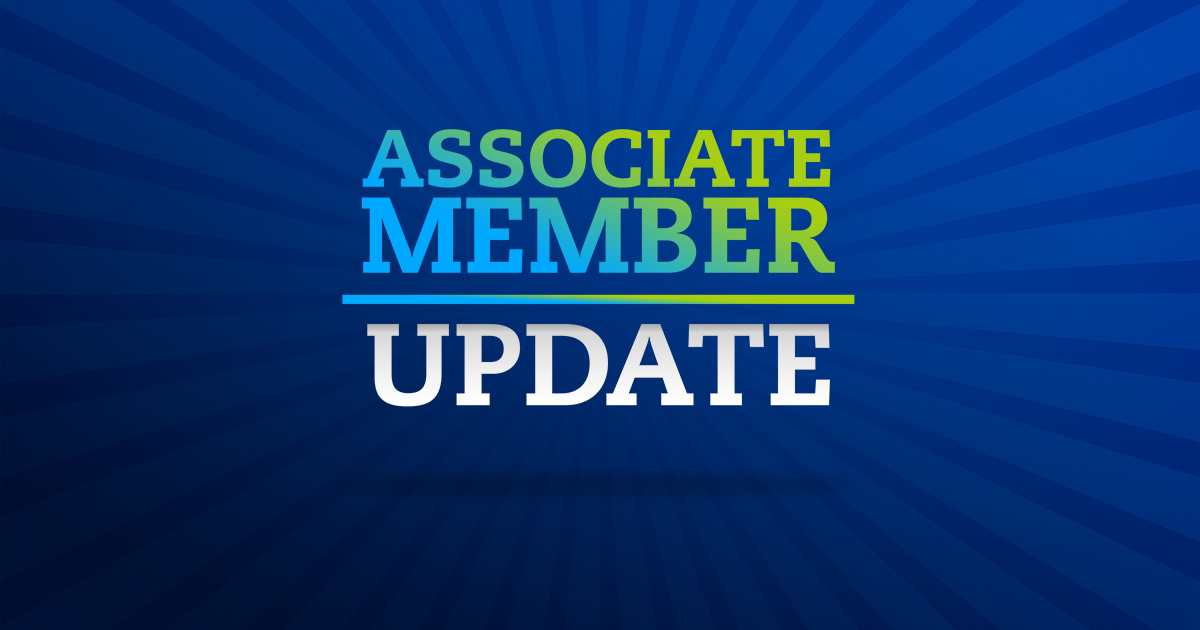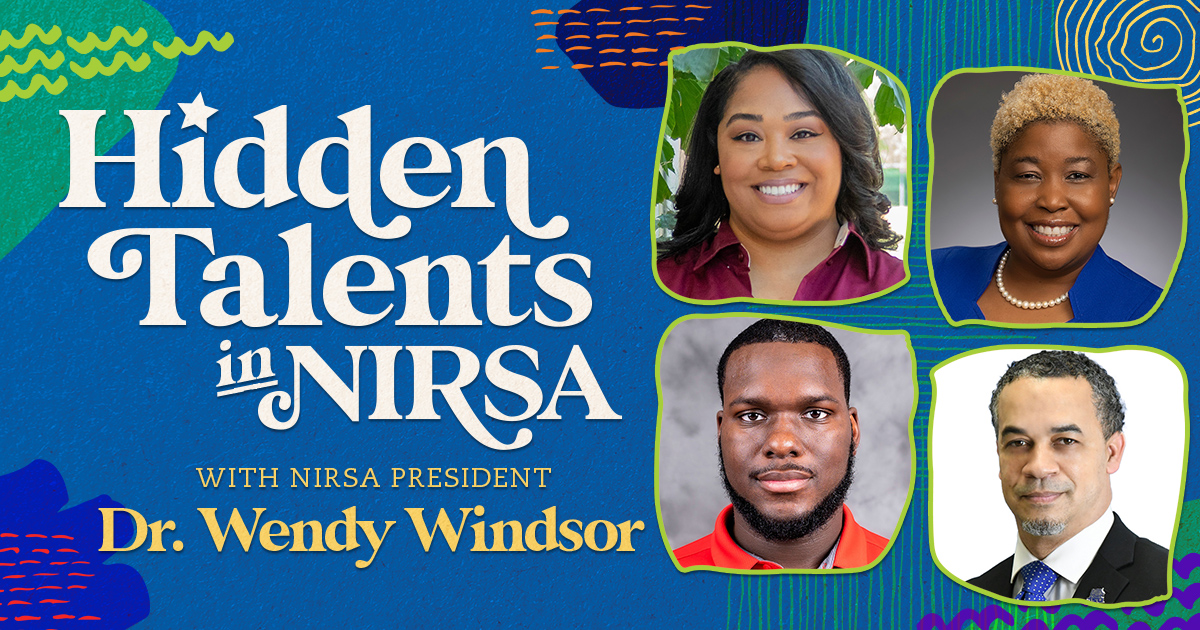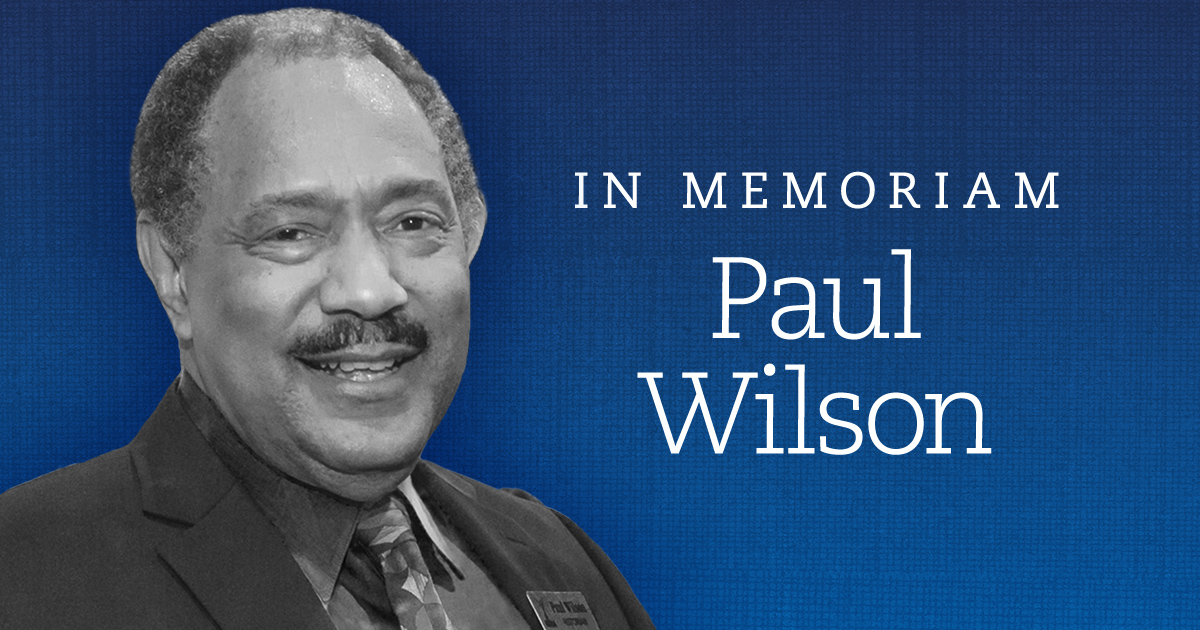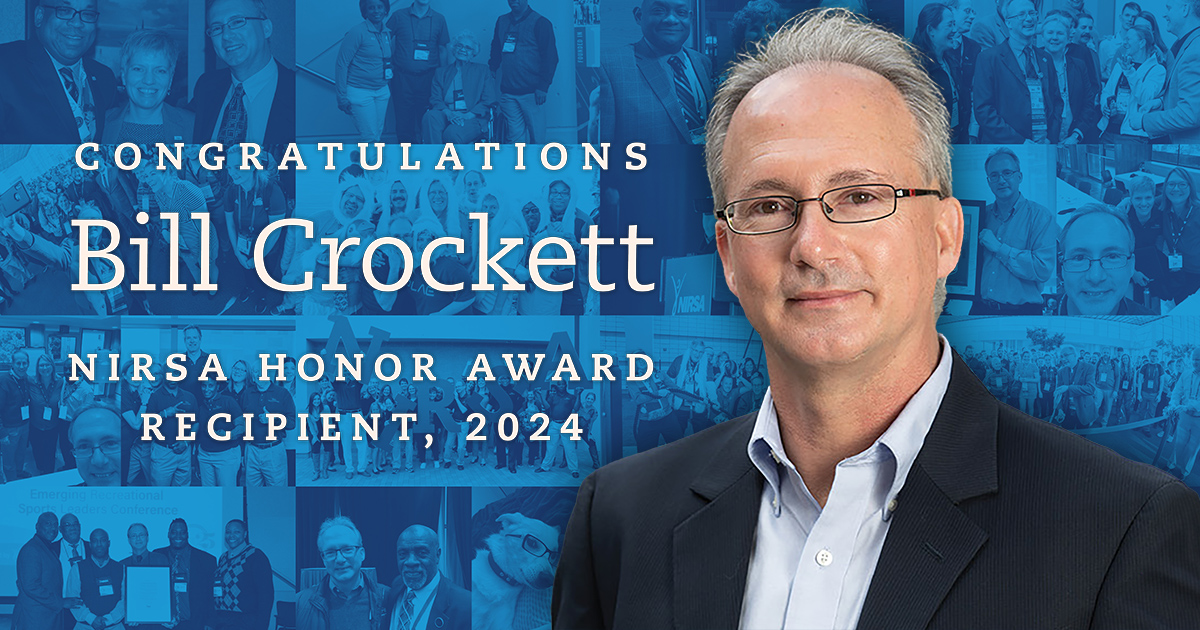As NIRSA celebrates the diverse culture of campus recreation programs and the ways that the Association supports their unique needs, we’ve asked staff members at small programs to share their stories with the broader NIRSA membership.
We caught up with David Crawford, Director of Recreation Services at Saint Martin’s University—a private school in Lacey, Washington with just over 1,300 undergraduate students and about 300 graduate students—to get to know a little bit more about how he found himself at SMU and to hear about what’s happening in the world of recreation and wellness on his campus.
About David
Tell us a little bit about yourself David. How did you find yourself working in recreation at SMU?
David: I graduated from Western Washington University in 2006 with a Bachelor of Arts in Recreation and Leisure with an emphasis in Outdoor Education. As an undergraduate student at Western Washington University, I had a variety of opportunities to learn about the field of recreation. Working in the Outdoor Center and Wade King Rec Center I cultivated a passion for recreation. While pursing my undergrad degree, I completed internships with the Young Life Mountaineering program Beyond Malibu in British Columbia, Canada, and the US Navy MWR program in Yokosuka, Japan.
After graduating from WWU, I pursued a master’s degree in recreation administration from Aurora University in Aurora, IL, working with the high/low ropes course program. I’ve worked as an adventure guide with military recreational programs and operated the marina and park on the local military base which included a rental and retail operation. I also have experience working to oversee youth sports programs with over 10,000 participants across Western Washington.
The recreation profession has taken me throughout the U.S. and across the world to places I never thought I’d see. Throughout my career I’ve been afforded opportunities to learn, try, and fail. These experiences have shaped who I am and helped make me a better person; I believe the experiences I’ve fostered outside of campus recreation have significantly helped prepare me to take on my current role.
As the director of SMU Recreation Services, I’m in charge of operations and programming across the department. Having a general knowledge about the field of campus recreation has helped me navigate my career path. As has a penchant for problem solving and a keen ability to recall previous experiences when it comes to successes for the department.

About Saint Martin’s University
That’s incredible! And what about SMU? What is the overall campus recreation and wellness scene like there?
Saint Martin’s University is a private Benedictine, Catholic university located in Lacey, Washington at the bottom of the Puget Sound. It’s located next to the state capitol of Olympia and about 57 miles south of Seattle, WA. The Campus Recreation Department has one full-time professional staff (that’s me), and as many as 45 part-time staff made up of students and non-students.
Campus Recreation is housed under Student Affairs and is overseen by the Dean of Students, along with Campus Life, Counseling, Residence Life, and the Athletic Department. Campus Recreation reports directly to the Athletic Director. There are around 1,600 students on campus that we serve.
The department is housed in the Charneski Recreation Center: a 36,000 sq/ft facility that includes three multi-purpose courts, an elevated running track, batting cages, a 9,000 sq/ft fitness center equipped with weights, cardio equipment, a multi-purpose classroom, an aerobics dance studio, and covered outdoor tennis facility. The facility is shared among all students, staff, faculty, clubs, and our NCAA DII Athletics teams. As the only major facility on campus, we provide services to diverse students and needs.
We offer a variety of programs including a wide range of in-person instructed and on-demand group fitness classes (Zumba, yoga, tai chi), 15-20 intramural sports leagues (floorball, basketball, soccer, etc.), tournaments (badminton, spike ball, archery tag), and outdoor recreation trips (hiking, caving, skiing, white water rafting).
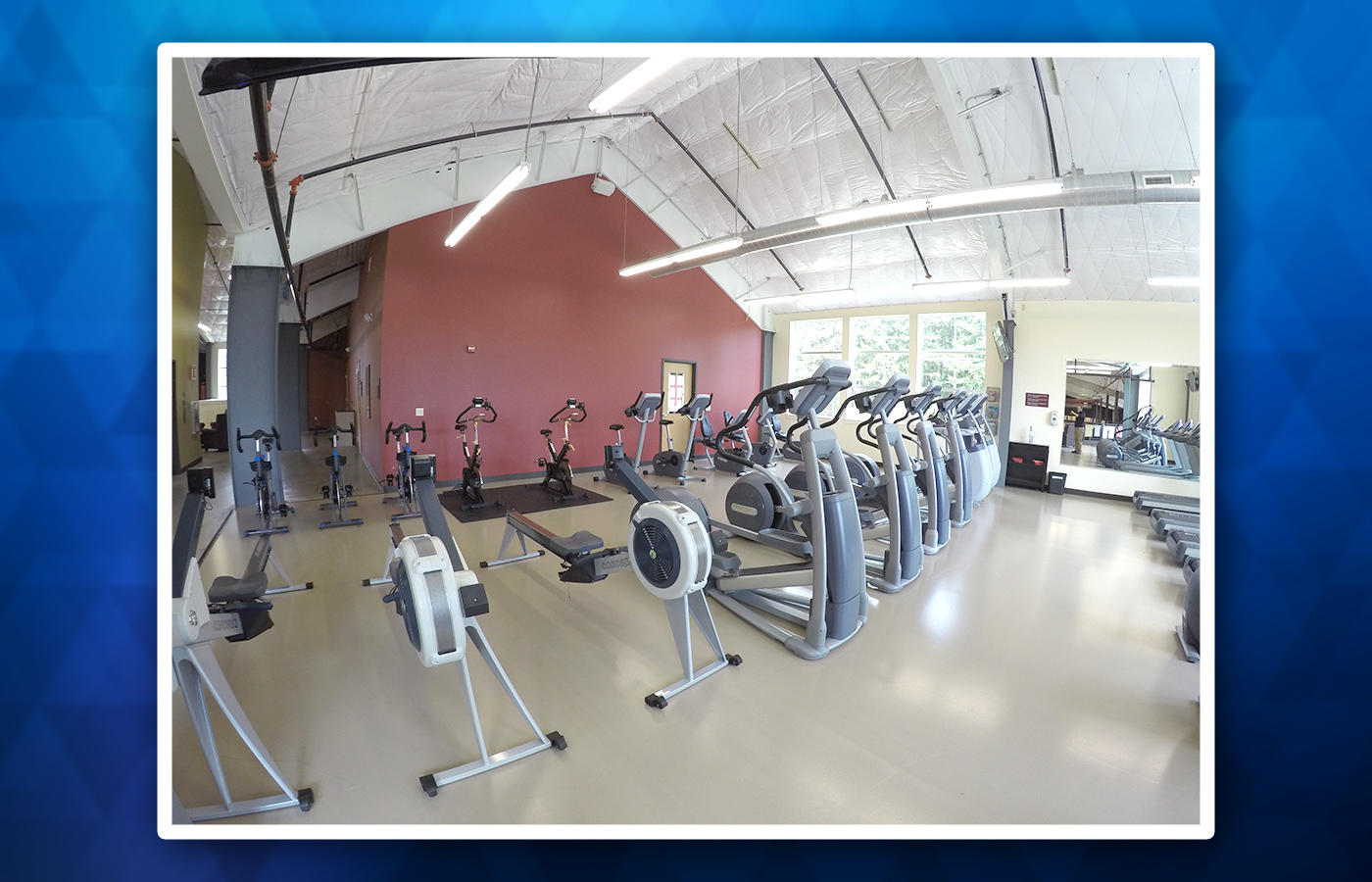
Opportunities and challenges
It sounds like an exciting time to be a student at SMU and like you’ve really had a chance to put your mark on a developing program. What would you say are some of the unique opportunities or challenges of working with the SMU community?
One of the biggest challenges is trying to meet the needs of the general university population of students, staff, and faculty while meeting the needs of our dedicated athletics and club sports teams. I work closely with our athletic coaches to ensure they have the space to train their teams while ensuring space remains open and available to the rest of the community. It’s a challenge that has presented some interesting scenarios over the years, and navigating it successfully requires a continuous effort to communicate with all the stakeholders.
I open the building early for team practices to minimize impacts during business hours. We have a standing order to always have one basketball court open to students at all times, and I enforce end times for team practices. This allows us to meet the needs of our student athletes and provide opportune times for student programs, intramural sports, and club activities all to have access to space within the facility. I would say this is one positive relationship between campus recreation and athletics that may not always be shared at other colleges and universities. I’m thankful for that.
Working at a small university has been great. I get the opportunity to engage with students across campus and form personal relationships with them. I think that might be more difficult to do at larger schools. A lot of times in campus recreation, you end up interacting with just the students on your staff. I love having non-staff students coming into my office to say hi and chat.
I know a lot of students by name who don’t work in campus recreation. I get chances to interact with students on a regular basis. I’ll join in a group fitness workout or lead a wilderness trip. That has a lot of value for me personally, and hopefully for students too. Being able to see and recognize people around campus and have those interactions makes my day better, and I hope it helps foster a sense of community for students.
The true challenge is balancing it all. As the only full-time staff member in the department, I wear a lot of hats. I can’t just think about the needs of group fitness or outdoor recreation. I have to constantly think ahead, budget, plan, and implement based on the needs of each area. My ever-present goal is to ensure that the department maximizes its resources to meet the needs of the most people. That can be a daunting task and while I fall short at times on this, I keep trying. My student staff play a huge part in shaping campus recreation at SMU and for that I’m truly grateful.
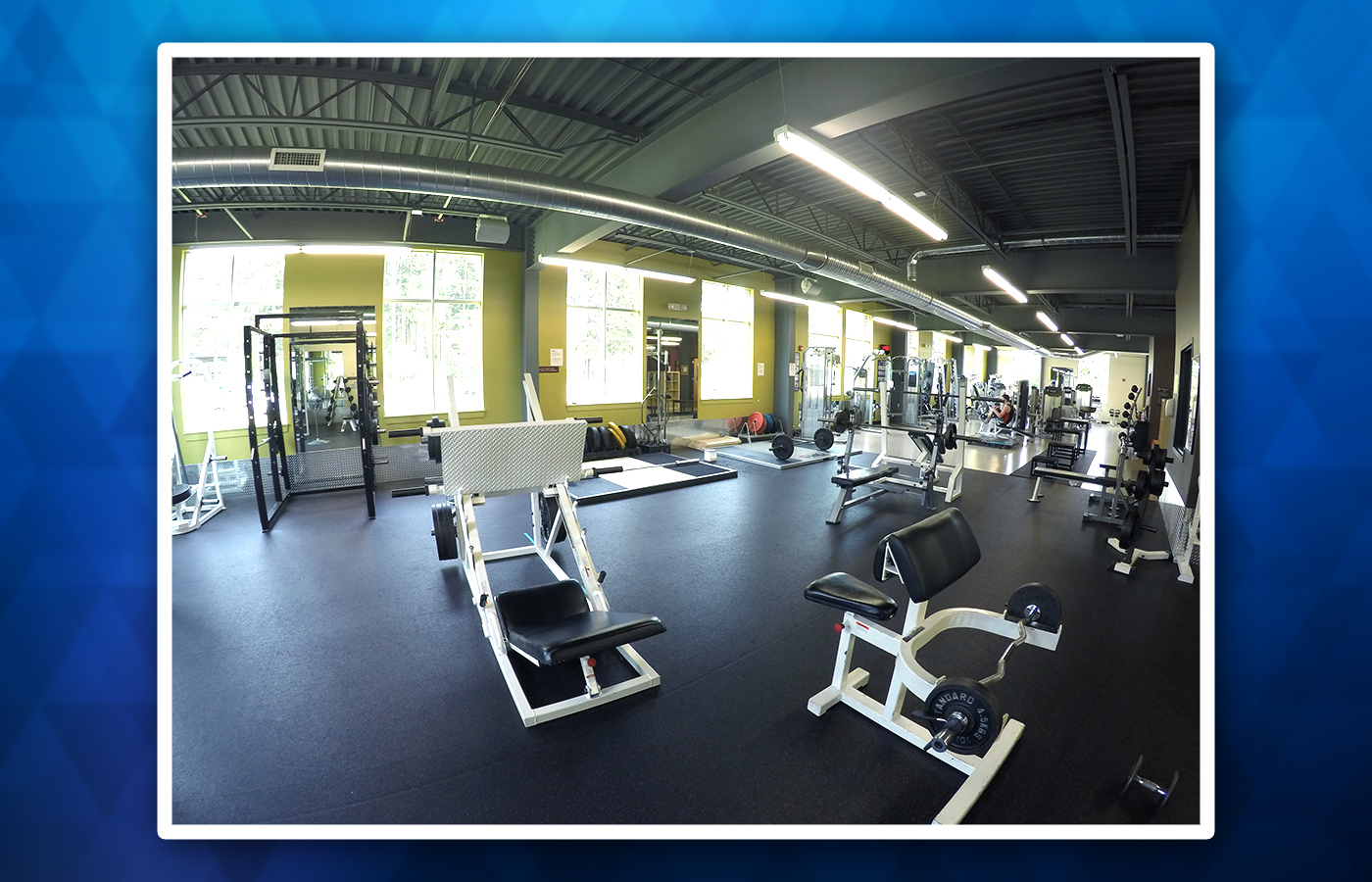
The NIRSA effect
That leads me naturally to my next question—how did you get involved with NIRSA and how have NIRSA colleagues helped you to improve the offerings and experiences you and your team foster for the SMU community?
Most of my networking has been volunteering with the NIRSA Championship Series; I’ve been fortunate to work at a number of regional events over the years. It’s always fun meeting new people and connecting with friends. I love connecting with colleagues within NIRSA and learning how people operate. I know I don’t have all the answers and I love talking with people to learn from them.
One thing I intentionally try to do is to make connections when I travel. If I’m in a new area, and I’m able to, I try to reach out and visit schools and programs. I was recently in San Jose, CA, and I was fortunate to meet with and tour facilities at Santa Clara University and San Jose State University. I wanted to see how they operate, what challenges they face, and what solutions they’ve discovered.
I’ve been to other campus recreation programs around Washington State and around the country. I love seeing how things are laid out, seeing how people manage the spaces they have, and how they program for their community. I think there’s a lot of value in making those connections.
Often, the things I take home are around facility layout or operations-related, which are really practical. I love the chance to have those collegial interactions because I don’t get to have those peer-to-peer conversations with colleagues on a regular basis at my school. At the very least, seeing new things helps me envision what I could implement when I go back. It may not be applied right away, but I’ve got it all stored in my head just waiting.
On the flip side, when I’m able, I attend and present at NIRSA conferences. I love getting the chance to learn from others, share my own knowledge, and connect with colleagues. My intent is to learn from other people’s successes and their failures. I don’t think we do enough of that. A lot of people want to showcase what they’re doing right, but not where they’re lacking. I go to conferences and sessions to do that. I want to hear where people failed. How did they overcome? Did they overcome? I’ve either been through the same thing, am going through it at that moment, or might be able to avoid it in the future.
For me, that’s the importance of making those connections and a huge part of the learning and development process.
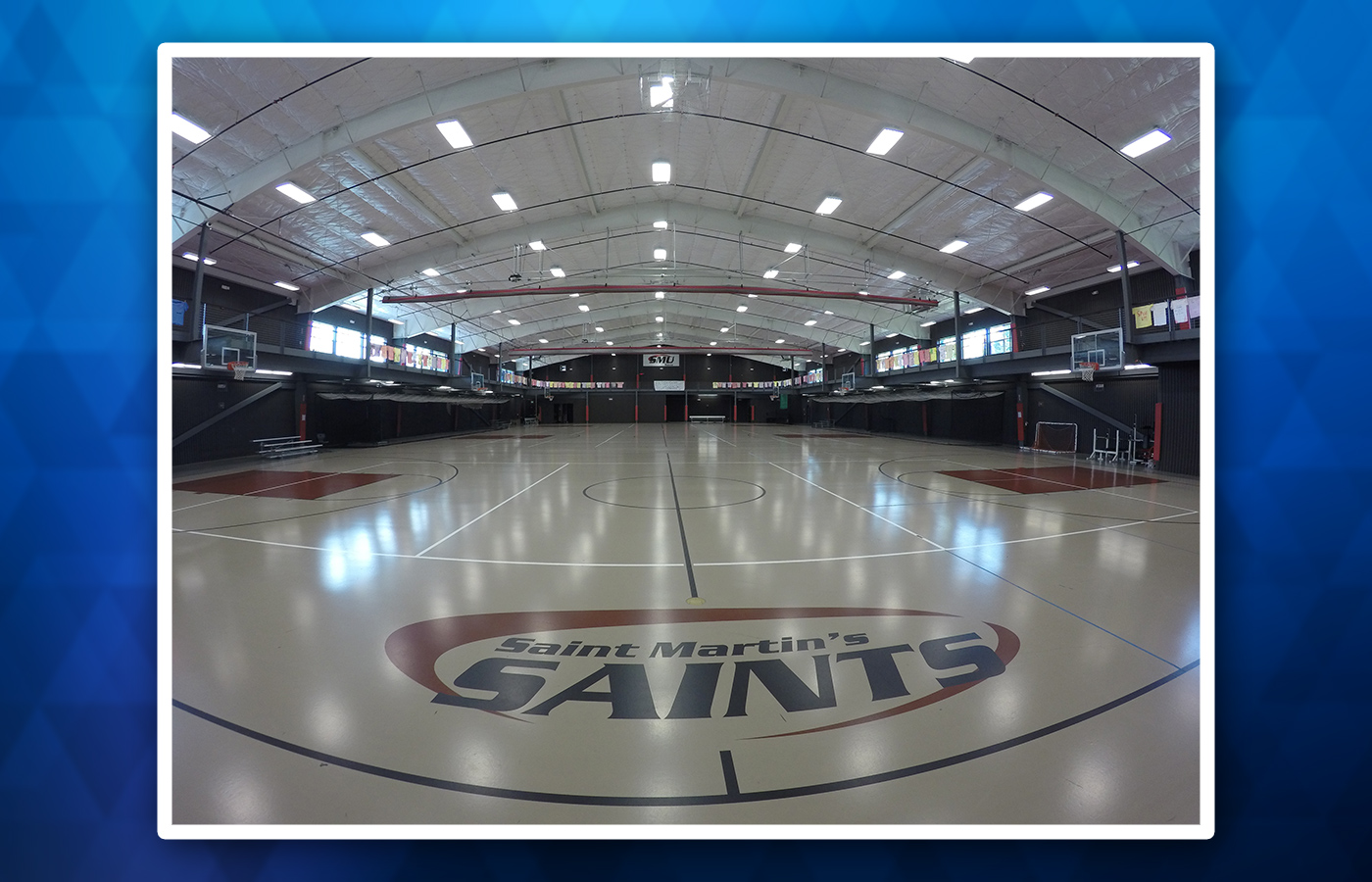
A bright future
What do you think the future holds for campus recreation and wellbeing at Saint Martin’s University?
When I was hired by SMU in the fall of 2015, I was the first full-time staff member for the department. One of the challenges I faced in the beginning was seeing how much ground we had to make up to be on par with other similar institutions as far as operations and programming. Intramural sports programs had been housed in campus life, outdoor rec didn’t exist, and the daily operations needed work. Over the last four years, the department has gone through an accelerated growth to catch-up. I think as a department we’ve done a wonderful job of doing that.
I think the future of campus recreation at SMU is bright. The students and general community have responded well to what we’re doing. Our surveys in that time frame have shown the significant impacts campus recreation has on this campus (including rates for retention, inclusion, and diversity) and that matters. The school has seen record enrollment this year and those extra students bring some new opportunities and challenges. With more people there’s more demand and use on our department across the board. Campus recreation needs to continue to evolve to keep up with new demands.
I’m always looking to grow and make positive changes to how we operate and what we offer, and my goal is always to provide more value to the campus community. Because of the support from my supervisors and administration, I’m always looking to keep up with new trends as I can. The flexibility and support allow me to pivot easily.
One example was that I was in the process of building out a space to house an outdoor equipment rental area for the facility. I felt there was a need to provide something new on campus. I had everything lined-up and ready to start the project. However, I was approached about doing on-demand fitness. The proposal intrigued me and the more I learned the more I realized that in the moment this was a program that could bring a lot of benefit to the community. I was able to redirect funds to invest in the fitness program. We paired it with our in-person classes and adding the on-demand video component has given our patrons something new and different. It’s brought more people into the building, inspired more engagement with our department, and hopefully will continue to inspire others on campus.
My hope going forward is that the department continues to evolve by adding new programs and services to campus. I’d like to open an outdoor rental shop, add a dedicated student intramural field, and offer personal training. In an ideal world we’d also add another full-time staff member to the team. The importance and role that campus recreation plays on campuses can’t be ignored. I think that we’ve shown our value, but we have so much more that we can do.
Rise and shine at NIRSA 2020
Connect with small campus rec program professionals like David at NIRSA 2020 in Phoenix. Intentional networking and learning opportunities will be available for students and professionals working at small program institutions.
Registration is now open and early bird discounts will last until March 5.
- If you work at a small program and would like to share your story, contact NIRSA Membership Services Coordinator Megan Granholm or consider pitching us your ideas for the opportunity to highlight what’s happening on your campus..
- For more information, contact Megan Granholm, NIRSA’s Member Services Manager.


